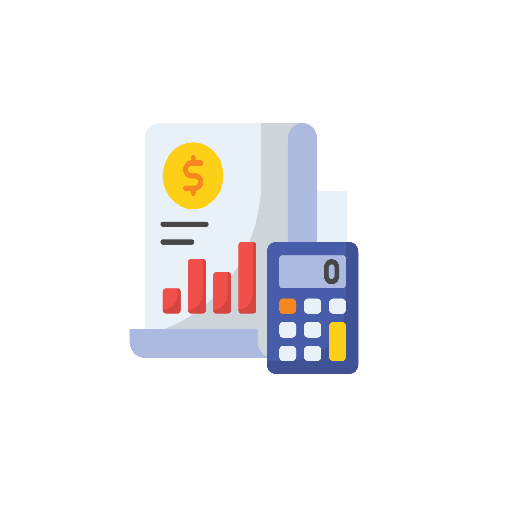Overview
Partner for the needy in Kenya and beyond in: Legal Representation; Humanitarian Support; Community Empowerment and all activities incidental to above.
Tags
- Non Governmental Organization Ngo
- Public Government Service
- Non Governmental Organization (ngo)
- Public & Government Service
Description
SAMARITANS INTERNATIONAL CENTER FOR SOCIAL JUSTICE-SAINCESOJU)
Samaritans International Center for Social Justice-SAINCESOJU) is a socio-legal non-governmental organization (NGO). It is one of the first organizations of its kind in Kenya that pursues justice, empower communities, and undertake Research in related subject areas. It has identified 7 pathways to Justice as below:
1. Social Justice
Knowledge of available paths to accessing justice is at its lowest in Kenya; few who are in the know are economically disempowered and hence would ideally not be able to follow through available avenues. The gap is growing between the rich and poor in Kenya.
Meanwhile, a growing number of working people are seeing their incomes drop. They are either working longer and harder for less pay or they're grasping at any kind of work. Economic inequality is fundamentally tied to our market system. To address the above, SAINCESOJU operates through a team of lawyers, paralegals and researchers who take a holistic approach by providing litigative support as well as outreach to villages through law clinics. The main focus of these has been to expand reach of legal services in Labour, Economic and Human Rights, Consumer Rights among others to socially vulnerable groups. The Center operates to provide:
a. Legal aid: Individual problems of people are addressed on a one-on-one basis.
b. Legal awareness: Proliferation of information about legal rights through awareness programmes.
c. Alternative dispute resolution mechanism (ADR): Agencies other than courts are set up for settling disputes. This includes activating state mechanisms, like permanent conciliation boards and family counselling centres.
d. Law reform: Existing laws are challenged for not being sensitive to the needs of the vulnerable groups.
2. Justice for Orphans and Vulnerable Children (OVC)
How a society treats those in need is a crucial determinant of its success in future. Kenya has more than 2 million children who have been orphaned by HIV/AIDS. Ideally these children should be absorbed within our families but with institution of family at its weakest, our neighborhoods cities and towns are teaming with street children. To mitigate this SAINCESOJU:
a. Sets up rescue and rehabilitation centers;
b. Facilitates community support to families and children affected by HIV/AIDs.
c. Creates awareness in poverty eradication;
d. Trains and educate single disadvantaged mothers to acquire self-reliance;
e. Promotes economic empowerment of women and the youths (street children and street mothers) on self help groups in rural areas;
f. Enhances communities capacities in home based care for persons infected by HIV/AIDs.
g. Creates awareness of HIV/AIDs in the rural areas and sensitization on the same disease for the street mothers and children;
h. Undertakes research on problems affecting the street children and mothers in various communities due to HIV/AIDs;
i. Works closely with the organizations with similar objectives and also other bodies, institutions, and also government institutions.
j. Avails the foundation material and financial resources where needed in order to provide medical assistance including the payment for any hospital bill for the street children and single street mothers.
3. Justice for physically and visually impaired
Every person with physical or vision loss should be able to live with independence and dignity. Kenya has more than 1 million people having both physical and visual impairment, SIANCESOJU:
a. Creates awareness;
b. Facilitates the diagnosis and management of visual diseases;
c. Facilitates community support to persons with physical impairment and visual diseases;
d. Maps prevalence of visual diseases and physical impairment;
e. Carryout medical camps to assist in diagnosis and treatment of visual diseases and physical impairment;
f. Train and educate persons visual and physical impairment to encourage self reliance;
g. Establishes centre’s in order to help persons with physical and visual impairment;
h. Undertakes research on problems affecting persons with physical and visual impairment in various communities and in the areas the organization is located;
i. Creates linkages closely with others organizations bodies, institutions, and also government institutions.
4. Justice in Education
Despite the introduction of Free Primary Education in Kenya in 2002, enrollments rates have been hampered by cultural practices, lack of awareness, and instability especially in frontiers counties among others. In addition, too many young people leave school without the skills and qualifications to secure a sustainable job and lead a fulfilling life. This has corrosive effects on their fortunes and the social fabric and economic prospects of our country. The center addresses the above through:
a. Runs an Academic sponsorship programme for the needy;
b. Runs a mentorship Programme;
c. Creates linkages closely with others organizations bodies, institutions, and also government institutions.
Our programmes have extensive and experienced Advocates, Doctors, Psychologists, Social Workers, Development Experts, Law students among others.
5. Justice for Cancer
Cancer is the 3rd highest cause of morbidity in Kenya [7% of deaths per year], after infectious diseases and cardiovascular diseases. There is difficult to get accurate national data because most data is coming from Nairobi and other urbanized settings.
Estimate 39,000 new cases of Cancer each year in Kenya with more than 27,000 deaths per year. 60% of Kenyans affected by Cancer are younger than 70 years old.
Leading Cancers in Kenya are:
• Women: Breast (34 per 100,000), Cervical (25 per 100,000)
• Men: Prostate (17 per 100,000), Esophageal (9 per 100,000)
• 70-80% of cancer cases are diagnosed in late stages
Due to: Lack of awareness; Inadequate diagnostic facilities; Lack of treatment facilities; High cost of treatment; High poverty Index
In terms of available facilities in the management of Cancer they are:
a. Radiation centers in Kenya- there are 4 (all in Nairobi – KNH, MP Shah, Nairobi Hospital, Aga Khan)
b. Number of treatment facilities: 4 (2 main, 2 limited)
c. Human Capacity for cancer treatment in Kenya (public sector):
• 4 radiation oncologists
• 6 medical oncologists
• 4 pediatric oncologists
• 5 radiation therapy technologists
• 3 oncology nurses
• 2 medical physicists
Some of Strategies for intervention by Saincesoju are:
a. Social interventions to support persons infected or affected to access management, treatment and palliative care;
b. Partnership with organizations with similar objectives.
6. Justice for the Un- Identified Dead Persons
How bodies of persons who die and there next of Kin cannot be traced are handled is a statutory preserve of the Department of Public Health. Often the department normally gives a 21 notice before disposing bodies of missing persons in Mass Grave or determining other ethical modes of disposal. Often families later come to realize about the disposal of their dead family member as identified due to an apparent communication Gap between agencies who often have custody of such dead persons and the families.
SAINCESOJU seeks to limit the anguish of families by:
a. Liaising with Statutory bodies to document anthropometric characteristics such as age, gender, height and unique identifying features, identification by radiological means, identification by dental records (forensic odontology) and identification by DNA ;
b. Formulate platforms to bridge the information gap between Families and Statutory bodies having custody of the Bodies of Missing Persons;
7. Justice in Medicare
Kenya spent 5.1% of its Gross Domestic Product (GDP) on healthcare in 2002. This was well below the high-income OECD (Organization for Economic Cooperation and Development) countries’ average of 9.8% for the same period. Total health spending stands at about US$6.2 per capita, far short of the World Health Organisation’s (WHO) recommended level of US$34 per capita .
The low investment in Healthcare by the Government has been coupled with increasing poverty levels which capped at 56% of the population live in poverty as at 2002.It is worth noting that this 56% contributed 51% of the total healthcare expenditure in 2002.
Strategies of Intervention by Saincesoju:
a. Source and attach Trained Medical Doctors to partnering Private Health Facilities in Rural Kenya;
b. Sponsor a doctor for a private Health Facility in Rural Kenya;
c. Health Professional Capacity Enhancement through local and International Exchange Programme;
d. Rural Kenya Health Management Outreach Programme.



